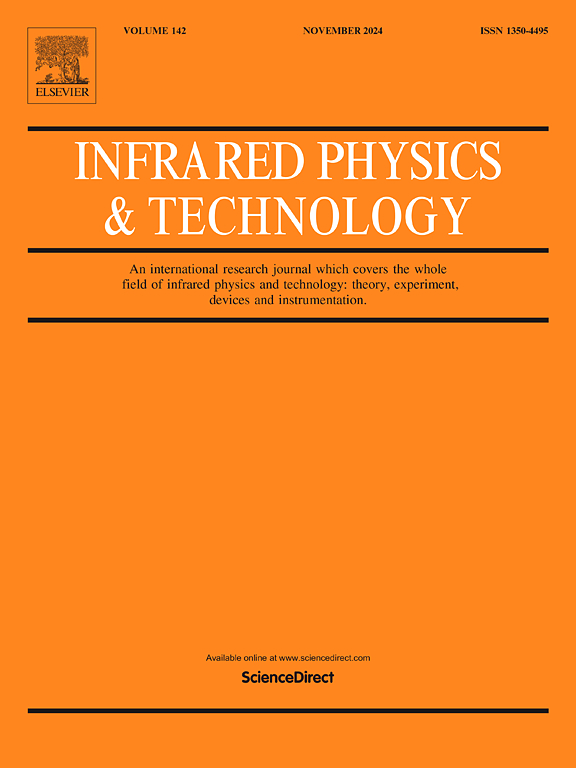The optical and electrical properties of V2O5-TiO2/PI Nanocomposite film prepared by the Sol-Gel method
IF 3.1
3区 物理与天体物理
Q2 INSTRUMENTS & INSTRUMENTATION
引用次数: 0
Abstract
In this study, nanoscale V2O5 film and V2O5-TiO2 composite film were prepared by the sol–gel method and post-annealing process utilizing polyimide (PI) as the substrates. The properties of the composite films were characterized by examining the surface morphology, elemental composition, and optical and electrical properties. The results demonstrate that the films maintain the flexibility of the substrate, while TiO2 doping effectively enhances the optical and electrical properties of the V2O5/PI. In the range of 750–1200 nm, the maximum transmittance of the V2O5-TiO2/PI film is increased by 5.77 % compared to the V2O5/PI film. At room temperature, the resistance of the film was significantly reduced by 96.4 % compared to the V2O5/PI film. In the context of thermotropic phase transitions, the phase transition temperature of V2O5-TiO2/PI film decreased to 213 ℃. Through many times repeated bending and temperature cycling, the films can maintain good optical and electrical properties, which is expected to be applied to flexible semiconductors and integrated optoelectronic devices.
求助全文
约1分钟内获得全文
求助全文
来源期刊
CiteScore
5.70
自引率
12.10%
发文量
400
审稿时长
67 days
期刊介绍:
The Journal covers the entire field of infrared physics and technology: theory, experiment, application, devices and instrumentation. Infrared'' is defined as covering the near, mid and far infrared (terahertz) regions from 0.75um (750nm) to 1mm (300GHz.) Submissions in the 300GHz to 100GHz region may be accepted at the editors discretion if their content is relevant to shorter wavelengths. Submissions must be primarily concerned with and directly relevant to this spectral region.
Its core topics can be summarized as the generation, propagation and detection, of infrared radiation; the associated optics, materials and devices; and its use in all fields of science, industry, engineering and medicine.
Infrared techniques occur in many different fields, notably spectroscopy and interferometry; material characterization and processing; atmospheric physics, astronomy and space research. Scientific aspects include lasers, quantum optics, quantum electronics, image processing and semiconductor physics. Some important applications are medical diagnostics and treatment, industrial inspection and environmental monitoring.

 求助内容:
求助内容: 应助结果提醒方式:
应助结果提醒方式:


